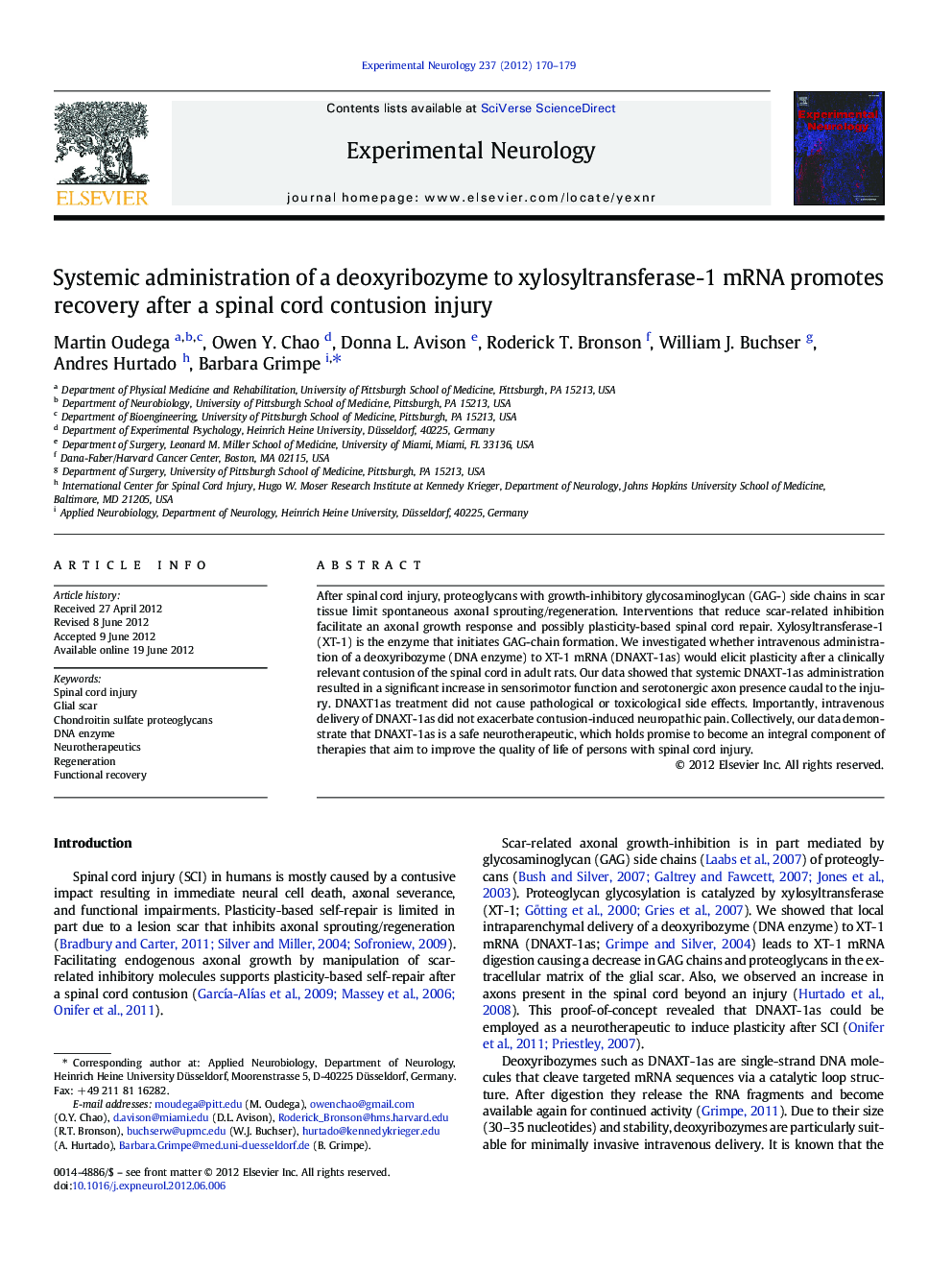| Article ID | Journal | Published Year | Pages | File Type |
|---|---|---|---|---|
| 3055648 | Experimental Neurology | 2012 | 10 Pages |
After spinal cord injury, proteoglycans with growth-inhibitory glycosaminoglycan (GAG-) side chains in scar tissue limit spontaneous axonal sprouting/regeneration. Interventions that reduce scar-related inhibition facilitate an axonal growth response and possibly plasticity-based spinal cord repair. Xylosyltransferase-1 (XT-1) is the enzyme that initiates GAG-chain formation. We investigated whether intravenous administration of a deoxyribozyme (DNA enzyme) to XT-1 mRNA (DNAXT-1as) would elicit plasticity after a clinically relevant contusion of the spinal cord in adult rats. Our data showed that systemic DNAXT-1as administration resulted in a significant increase in sensorimotor function and serotonergic axon presence caudal to the injury. DNAXT1as treatment did not cause pathological or toxicological side effects. Importantly, intravenous delivery of DNAXT-1as did not exacerbate contusion-induced neuropathic pain. Collectively, our data demonstrate that DNAXT-1as is a safe neurotherapeutic, which holds promise to become an integral component of therapies that aim to improve the quality of life of persons with spinal cord injury.
► No toxicological and pathological side effects. ► Significant behavioral improvement. ► Enhanced axonal plasticity. ► No effect on neuropathic pain.
